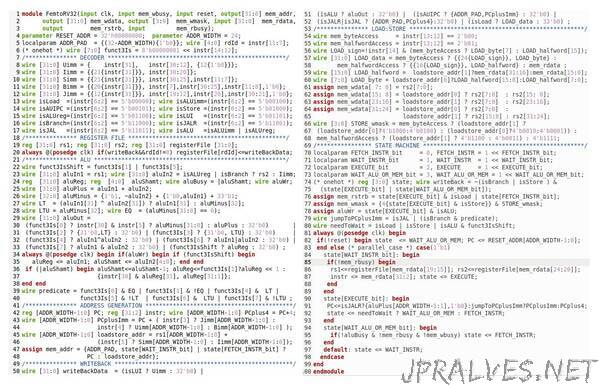
“This tutorial is a progressive journey from a simple blinky design to a RISC-V core.
It works with the following boards:
- IceStick
- IceBreaker
- ULX3S
- ARTY
If you do not have a board, you can run everything in simulation (but it is not as fun).
About this tutorial
- it is a progressive introduction, changing only one thing at a time. It is a curated version of my logbook when I learnt these notions (2020-2022). I also tryed to keep track of all the dead ends I explored and traps that caught me, they are often indicated as side remarks and notes;
- I try to keep hardware requirement as minimal as possible. With the tiniest FPGA (IceStick Ice40HX1K) you can do the first episode of the tutorial and transform it into a fully functional RV32I microcontroller that can execute compiled C code.
- in the end, the obtained processor is not the most efficient, but it is not a toy: it can execute any program. To anwser the question you may ask, yes, it runs DOOM! (but not on an IceStick, you will need a larger FPGA). It works with the help of LiteX that has a nice SDRAM controller, because Doom needs some RAM;
- the tutorial is both about hardware and software: you will learn how to compile programs in assembly and in C for your core;
- I try to make all example programs fun and interesting while reasonably short. The bundled demo programs include:
- mandelbrot set in assembly and in C
- rotozoom graphic effect
- drawing filled polygons
- raytracing These graphic program are all displayed in text mode on the terminal, using ANSI escape sequences (yes, this makes BIG pixels). For more fun, it is also possible to use a small OLED display instead (will add instructions for that in the future).”
